Berlin’s dark history under the shadow of National Socialism is on full display during the Time of National Socialism Walking Tour. Led by knowledgeable guides, visitors uncover the rise and fall of the Third Reich through key landmarks like the Reichstag, Holocaust Memorial, and Topography of Terror. As they walk the city’s streets, they’ll gain a sobering understanding of how the Nazi regime’s actions impacted Berlin and its people. From the symbolic significance of the Brandenburg Gate to the remnants of Hitler’s bunker, this tour offers a comprehensive look at a pivotal era that forever shaped the German capital.
Key Points
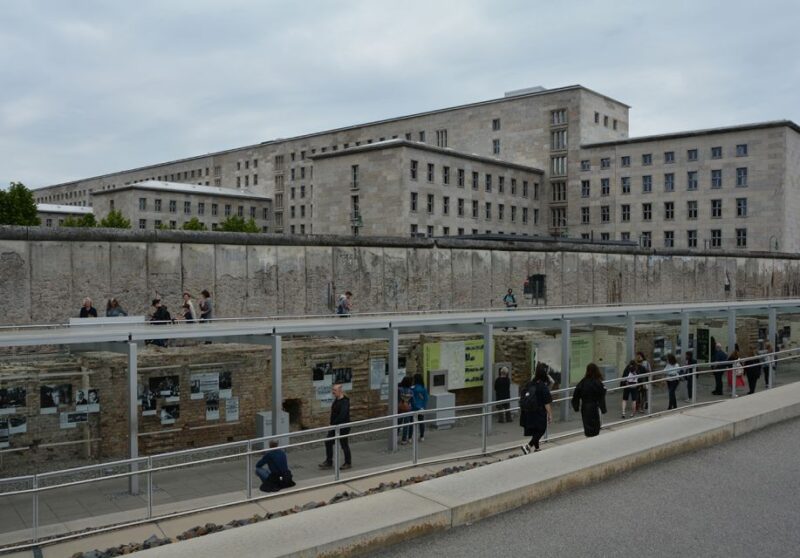
- The tour provides a comprehensive exploration of Berlin’s history during the era of National Socialism, led by certified, multilingual guides.
- The 2-hour walking tour reveals hidden remnants of World War II and visits key buildings and locations from the time of Nazi rule.
- The tour starts at the iconic Brandenburg Gate, where Nazi propaganda marches once took place, and visits the Reichstag, the site of the Nazi Party’s rise to power.
- The tour includes stops at the Soviet War Memorial, the Holocaust Memorial, and the Topography of Terror Documentation Center, each offering a somber reminder of the devastation caused by the Nazi regime.
- The tour explores the remnants of Hitler’s bunker, providing a sobering look into the final days of the Nazi regime.
Tour Overview and Highlights

The National Socialism Walking Tour provides a comprehensive exploration of Berlin’s history during the era of National Socialism, led by certified, multilingual guides.
This 2-hour walking tour takes visitors on a journey through the city, revealing the hidden remnants of World War II and visiting key buildings and locations from the time of Nazi rule.
Highlights include seeing the Reichstag, where the Nazi party came to power, and the Soviet War Memorial in Tiergarten.
The tour also includes stops at the Holocaust Memorial and the Topography of Terror Documentation Center, the former headquarters of the SS and Gestapo.
Participants will learn about the German Resistance against the dictatorship from a native Berliner guide.
If you're enjoying exploring Berlin on foot, you'll love these other walking tours we recommend
Walking Through the Nazi Era
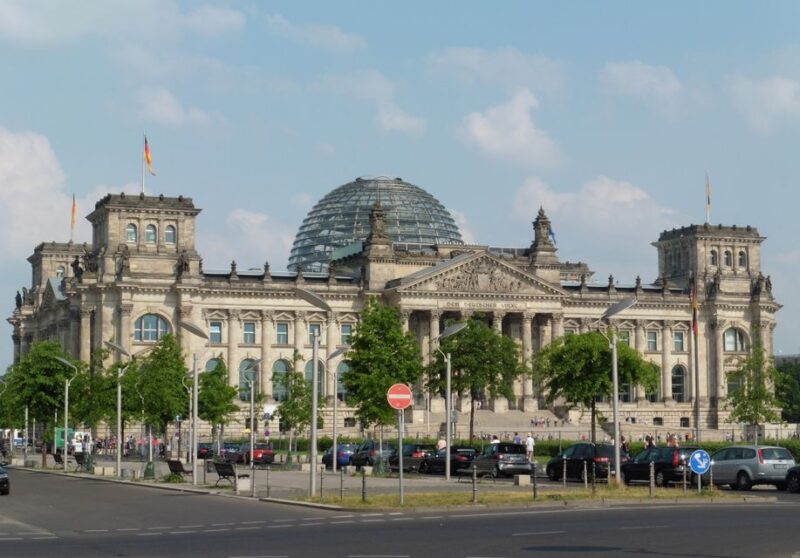
From the iconic Brandenburg Gate, where Nazi propaganda marches once took place, the tour guides visitors through the city’s troubled past, unveiling the remnants of a dark chapter in German history.
Guests will visit the Reichstag, the seat of German parliament where the Nazi Party rose to power in 1933.
The tour then leads to the Soviet War Memorial, a stark reminder of the devastating World War II battle for Berlin.
At the Holocaust Memorial, the group reflects on the murder of millions of Jews, while the Topography of Terror Documentation Center exposes the atrocities committed by the Nazi regime.
Throughout the journey, the guide shares personal insights as a native Berliner, bringing the city’s complex history to life.
Significance of the Brandenburg Gate
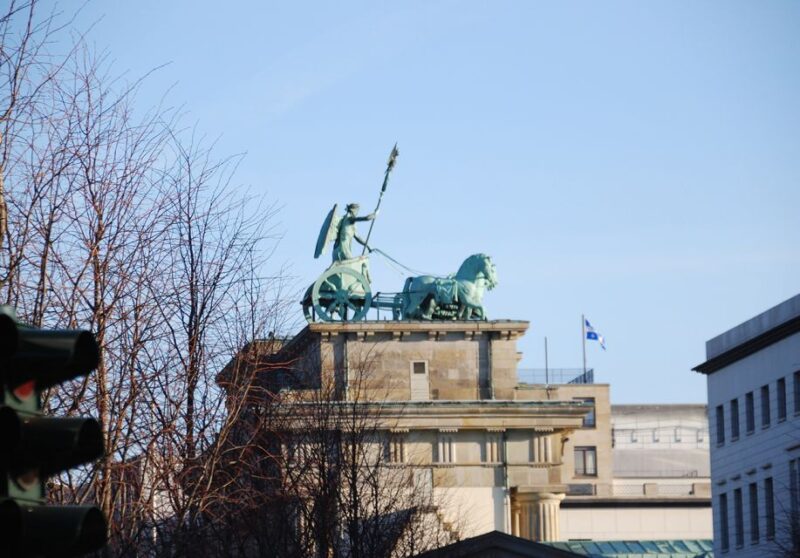
Prominently featured on the walking tour, the Brandenburg Gate symbolizes the tumultuous history of Berlin during the National Socialist era. Constructed in the late 18th century, this iconic landmark often served as a backdrop for Nazi propaganda rallies and military parades, underscoring the party’s desire to project an image of strength and unity.
The significance of the Brandenburg Gate during this period is threefold:
-
It was used as a stage for the Nazis to showcase their power and control over the city.
-
The gate’s location at the center of Berlin made it a symbolic centerpiece of the Nazi regime’s vision for the capital.
-
Its association with the Third Reich has left an indelible mark on the gate’s legacy, forever linking it to the dark chapter of German history.
The Reichstag and Nazi Rise to Power
On the walking tour, visitors also explore the Reichstag, where the Nazi Party NSDAP and Adolf Hitler rose to power in 1933.
After the Reichstag fire, the Nazis used the event as a pretext to suspend civil liberties and consolidate their grip on the German government.
The Reichstag had been the seat of the German parliament since 1894, but in 1933, the Nazis took control, passing the Enabling Act that allowed Hitler to enact laws without the Reichstag’s approval.
This marked the end of the Weimar Republic and the beginning of the Nazi dictatorship. Visitors learn about this pivotal moment in history and its lasting impact on Germany and the world.
More Great Thing To Do NearbyThe Soviet War Memorial in Tiergarten
As visitors make their way through the tour, they come across the Soviet War Memorial in Tiergarten, which commemorates the thousands of Soviet soldiers who perished during the Battle of Berlin in 1945.
The memorial features several prominent elements:
- Two T-34 tanks and several artillery pieces, symbolizing the Soviet military might that helped defeat Nazi Germany.
- A large obelisk topped with a Soviet soldier, representing the sacrifices made by the Red Army.
- Inscriptions in Russian and German, honoring the memory of the fallen soldiers and the Soviet Union’s role in the liberation of Berlin.
This powerful memorial serves as a somber reminder of the immense human cost of the war and the eventual triumph of the Allied forces over the Nazi regime.
- Discover Berlin Half-Day Walking Tour
- Sachsenhausen Concentration Camp Memorial Tour From Berlin
- Explore Berlins Top Attractions 3-hour English Walking Tour
- Third Reich Berlin: Hitler and WWII Walking Tour
- Sachsenhausen Concentration Camp Memorial Tour With Max 15 People
- Visit to the Sachsenhausen Concentration Camp
The Holocaust Memorial and Its Symbolism
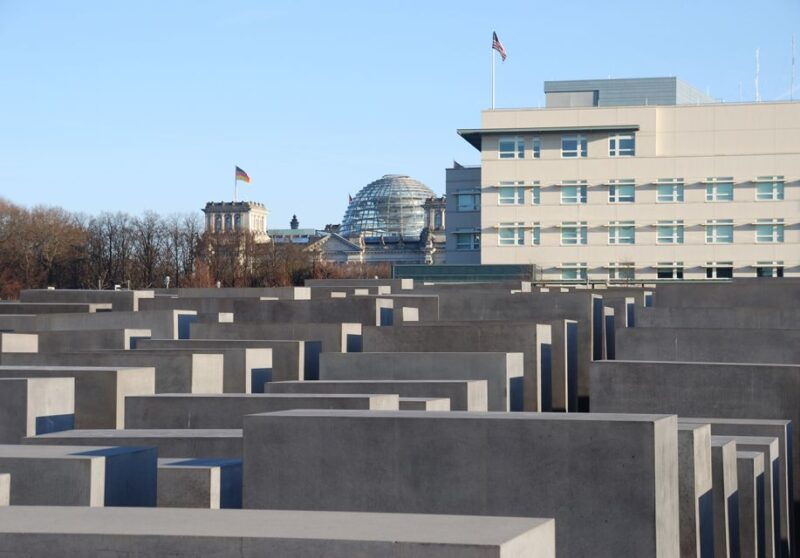
The Holocaust Memorial, a solemn monument in central Berlin, stands as a powerful symbol of the immense tragedy that befell the Jewish people during one of history’s darkest chapters.
Designed by architect Peter Eisenman, the memorial consists of over 2,700 concrete slabs arranged in a grid pattern, creating an unnerving and disorienting experience for visitors. The varying heights of the slabs represent the lack of order and structure that characterized the Holocaust.
As visitors walk through the maze-like memorial, they’re confronted with the immense scale of the genocide and the profound human suffering it caused. The memorial serves as a stark reminder of the importance of vigilance and the need to prevent such atrocities from ever occurring again.
Exploring the Remnants of Hitler’s Bunker
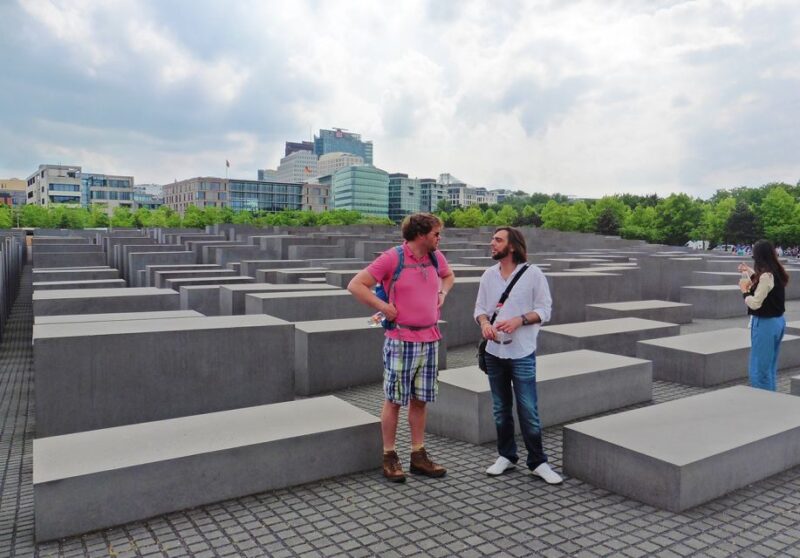
Visitors can explore the remnants of Hitler’s bunker, the subterranean complex that served as the Nazi dictator’s final refuge during the final days of World War II. Buried deep beneath the Reich Chancellery in central Berlin, the bunker’s crumbling concrete walls and tunnels now stand as eerie relics of a dark chapter in history.
The tour includes:
- Viewing the site where Hitler and his wife Eva Braun committed suicide on April 30, 1945, as the Red Army closed in on Berlin.
- Examining the living quarters and command rooms where Hitler and his inner circle hid from the advancing Allied forces.
- Exploring the ventilation shafts, storage rooms, and other facilities that made up the sprawling underground complex.
The Topography of Terror Documentation Center
The Topography of Terror Documentation Center occupies the former headquarters of the SS, Gestapo, and Reich Security Main Office, offering visitors a sobering look into the mechanisms of Nazi terror. The expansive exhibit details the origins and operations of these brutal organizations that carried out mass murder across Europe. Through informative panels, historical artifacts, and multimedia displays, the center chronicles the rise and fall of the Third Reich. Visitors gain a deeper understanding of how the Nazi dictatorship was able to take hold and the devastating consequences that followed.
| Key Facts | |
|---|---|
| Location | Niederkirchnerstraße 8, 10963 Berlin |
| Opened | 1990 |
| Size | 3,800 square meters |
| Exhibits | Origins of the Nazi regime, operations of the SS and Gestapo, Holocaust documentation |
| Visitors | Over 1 million annually |
Frequently Asked Questions
Is the Tour Wheelchair Accessible?
The tour is generally wheelchair accessible, though some sites may have limited access. It’s best to check with the tour operator ahead of time to discuss any accessibility needs and make necessary arrangements.
Are There Any Discounts Available for Students or Seniors?
Yes, the tour offers discounts for students and seniors. According to the details, the standard tour price is $38.14 per person, but reduced rates may be available for those who qualify.
Can I Take Photos During the Tour?
Yes, participants can generally take photos during the tour, though they should be mindful of any restrictions or sensitive areas. The guide can provide guidance on appropriate photography during the experience.
Is There an Option to Extend the Tour Duration?
The tour duration can typically be extended upon request. Guests interested in a longer exploration may be able to arrange for an extended tour with the tour provider, subject to availability and additional fees.
Are There Any Restroom Breaks During the Tour?
The tour does not explicitly mention any scheduled restroom breaks. However, as it is a 2-hour walking tour, it’s reasonable to assume there may be opportunities for participants to use restrooms at some of the tour stops along the way.
Recap
The Berlin: The Time of National Socialism Walking Tour provides a powerful and insightful exploration of the city’s harrowing history under Nazi rule.
Visitors will gain a deeper understanding of the symbolic significance of key landmarks, the rise and fall of the Third Reich, and the devastating impact on the people of Berlin.
This sobering yet informative tour offers a valuable opportunity to reflect on this pivotal era in Germany’s past.
You can check if your dates are available here:More Walking Tours in Berlin
More Tours in Berlin
More Tour Reviews in Berlin
Not for you? Here's more things to do in Berlin we have recnetly reviewed
- 5 Best Craft Beer Tours And Tastings In Berlin
- 3 Best Shopping Tours In Berlin
- 7 Best Christmas Experiences In Berlin
- 16 Best Dining Experiences In Berlin
- 2 Best 2 Day Tours In Berlin
- 4 Best Lunch Experiences In Berlin
- 2 Best Full-Day Tours In Berlin
- 15 Best Photography Experiences In Berlin
- 12 Best Dinner Tours In Berlin
- 25 Best Cruises And Boat Tours In Berlin
- 25 Best Food Tours In Berlin
- Third Reich Quest Experience in Berlin
